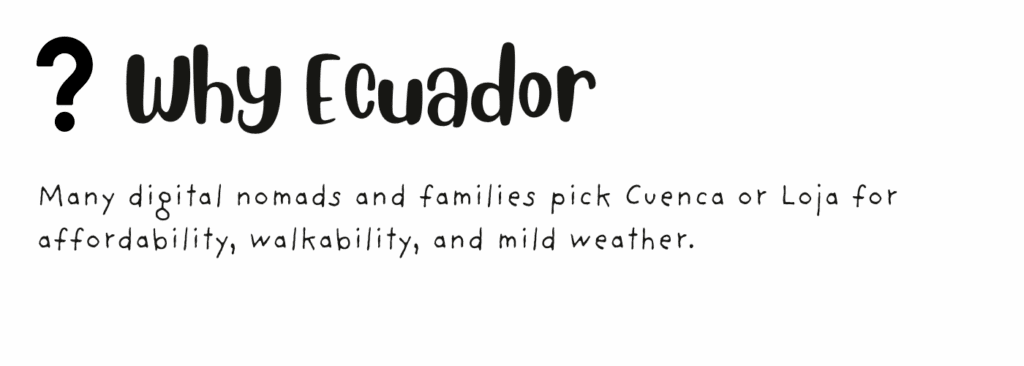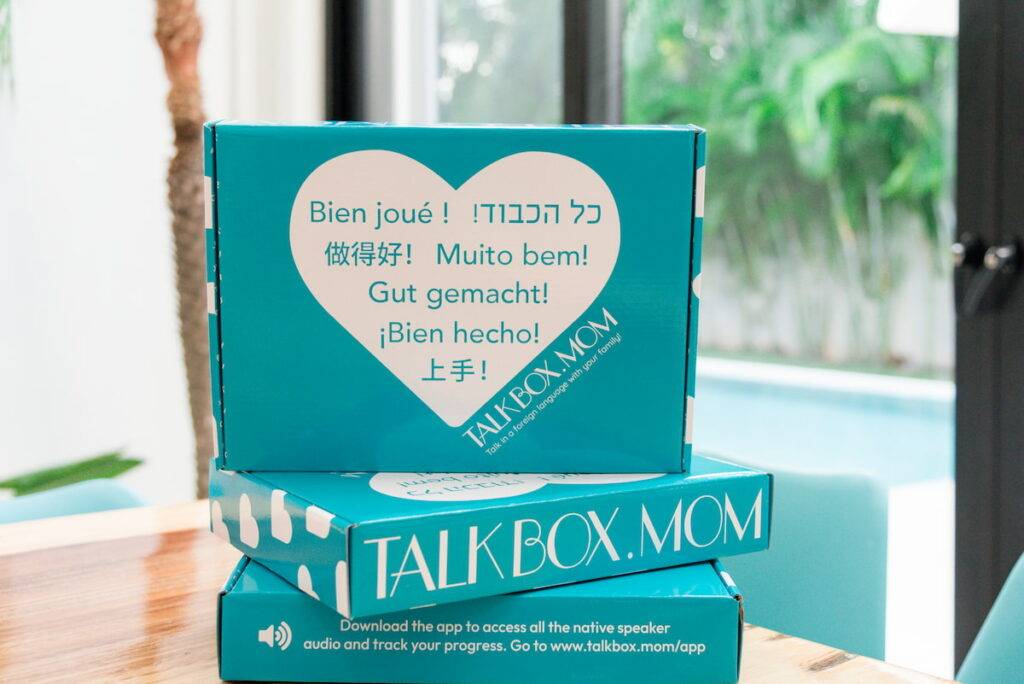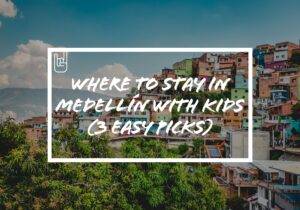Cost of Living in Ecuador (2025): A Monthly Budget Breakdown
Real talk: Ecuador wasn’t on our original dream list. But the more we researched, the more it climbed the ranks, thanks to family-friendly visas, budget-friendly living, and the promise of fresh mangoes for under a dollar. While we haven’t touched down just yet (August 2025, here we come), we’ve crunched the numbers using the latest data to show what it might actually cost to live, eat, and raise kids here month by month.
About This Guide
We’re a family of four preparing to travel slowly through Ecuador in late 2025, part of a longer adventure across South America. This cost of living guide combines fresh 2025 research, first-hand advice from expats, and practical insight for families, remote workers, and long-stay travellers.
Whether you’re eyeing Cuenca, Quito, or the coast, this breakdown will help you budget wisely, spot regional cost differences, and plan for a smoother landing.
Why Ecuador?
If you’re planning long-term travel, remote work abroad, or even scouting for a slow-living lifestyle in South America, Ecuador quietly offers one of the best cost-to-comfort ratios out there.
From the colonial charm of Cuenca to the cultural pulse of Quito, Ecuador combines solid infrastructure with affordability a rare find these days. It’s also one of the few countries in Latin America where the US dollar is the official currency, making budgeting easier for many travelers.
Whether you’re a solo nomad, a couple testing out slow travel, or a worldschooling family trying to live intentionally (and affordably), Ecuador punches well above its weight.
In this breakdown, we’re pulling current 2025 data from Numbeo, one of the world’s most reliable user-powered cost of living databases and pairing it with real travel planning insights from our own prep.
Table of Contents

Housing & Utilities in Ecuador (2025)
Housing is one of the biggest factors that makes Ecuador so attractive to long-term travellers and digital nomads. Compared to Europe, the U.S., or even Mexico, you’ll get much more for your rent here without sacrificing safety or comfort.
What Rent Costs in 2025
Type of Rental | Average Monthly Rent (USD) |
|---|---|
| 1-bedroom outside city center: | ~$273 |
| 3-bedroom outside city center: | ~$450 |
| City center premium (Quito/Guayaquil): | +20–35% |
You’ll find better value in cities like Cuenca, Loja, or even smaller hubs like Otavalo. Many expat families settle in these areas for the balance of amenities, walkability, and a slower pace of life.
Pro Tip: Local landlords often prefer 3–6 month leases and may lower the price for families staying longer, especially outside major expat zones.
Utilities and Internet
Internet (60 Mbps+): ~$31/month
Electricity, water, gas, trash (family of 4): ~$70–100/month depending on region and AC use
Prepaid mobile data plans: ~$10–15/month for 5–10 GB
Internet speed is generally reliable in cities, though rural areas can vary widely. For remote work, Cuenca and Quito offer the most consistent bandwidth. We’ve also heard from families running full homeschool setups with no issue, so it’s very doable.
Extra Tips
Utilities are usually not included in long-term rentals. Always confirm what’s covered.
Air conditioning isn’t common in highland cities (and often not needed). This keeps electricity costs lower than in tropical zones like Guayaquil.
Look for rental listings on Facebook groups, GringoPost, or even in-person — Ecuador is still a “walk the neighbourhood” kind of rental market.
- If using Airbnb, read all review (don’t rely on photos) check the Google map and go on street view, Check the local areas, then go on Tripadvisor and chest other reviews.
This blog is fuelled by caffeine and chaos, if it helps, support our journey.
Groceries + Eating Out in Ecuador (What You’ll Really Spend)

The food scene in Ecuador is one of its best-kept secrets: local markets are fresh and affordable, almuerzo lunches are satisfying and cheap, and even in cities, a solid grocery budget won’t wreck your monthly plans.
Grocery Costs for Travellers & Families
If you’re cooking at home (which many families and slow travellers do), you’ll find a weekly shop surprisingly affordable, especially if you skip imported items and shop local.
Item
| Average Price (USD) |
|---|---|
| 1kg chicken breast: | ~$5.65 |
| Dozen eggs: | ~$2.11 |
| 1L milk: | ~$1.04 |
| Loaf of fresh bread: | ~$1.58 |
| Local cheese (500g): | ~$3.60 |
| 1kg apples: | ~$1.66 |
| Head of lettuce: | ~$0.67 |
| 1kg rice: | ~$1.33 |
| Bottled water (1.5L): | ~$0.85 |
Pro Tips:
Markets like Cuenca’s Mercado 10 de Agosto or Quito’s Santa Clara offer better produce prices than chain supermarkets.
Stick to local fruits/veg: bananas, passionfruit, yuca, corn, papaya = much cheaper than apples or berries.
Imported snacks, cereals, or cheese? Expect premium pricing.
Family of 4 Monthly Grocery Spend:~$450–500
Solo Monthly Grocery Spend: ~$220–250
Eating Out: Still a Bargain (If You Know Where to Go)
Ecuador is still one of the few places where you can eat out without feeling like you’re draining your budget.
Almuerzo (lunch menu): $2.50–$4.00: soup, main, juice
Casual dinner out (per person): $6–10
Cappuccino: ~$2.48
Domestic beer: ~$1.75
Glass of wine: ~$3.50–$5.00
Many travellers find they can eat out 2–3 times a week and still stay within budget, especially if you mix in home cooking and street food.
📌 For families, dining out at local spots remains affordable. Even mid-range places often welcome kids and don’t charge extra for simple modifications (we’ve heard requests for rice-only plates or half-portions go down just fine). Remember kids generally waste food, so buy less to begin within.

Transport, Internet & Miscellaneous Costs in Ecuador
You don’t need a car to live well in Ecuador, especially if you’re staying in walkable hubs like Cuenca or Quito. Transport is simple, reliable, and cheap, and other monthly extras like internet or data plans are surprisingly budget-friendly.
Getting Around in Ecuador
Ecuador’s public transportation system is among the most affordable in South America.
Mode
| Avg Cost (USD) |
|---|---|
| Local bus fare | ~$0.35 |
| Metro ride (Quito) | ~$0.45 |
| Taxi base fare | ~$1.50 |
| 1 km in taxi | ~$1.00 |
| Intercity bus (e.g. Quito → Baños) | ~$8–10 |
| Gasoline (per liter) | ~$0.68 |
Tips:
Taxis in cities are inexpensive but often don’t use meters, agree on a price or use ride apps like Cabify or Uber (in Quito). Don’t just get into random street taxi’s.
City buses can be crowded but are safe and widely used by locals.
For families, consider hiring a driver for intercity trips often cheaper and easier than renting.
Monthly local transport budget (solo): ~$30
Monthly transport budget (family): ~$60–80 (including occasional private transfers)
Internet, Phone & Data
Ecuador’s urban areas offer solid internet coverage and very cheap mobile plans.
Wi-Fi (60 Mbps+): ~$30/month
SIM card with data: ~$5–10/month (Claro, Movistar)
Pay-as-you-go top-ups: Easy to find in local shops or supermarkets
Streaming & video calls: Very doable in major cities like Cuenca, Quito, and Loja
If you’re remote working or worldschooling, stable internet is key and most long-term rentals in cities will come with decent pre-installed service.
Travelling to Peru? Consider reading our Peru Cost Of Living guide
Other Monthly Costs to Consider
Gym membership: $20–40/month (city dependent)
Laundry (per kg): ~$1.00–1.50
Subscriptions: Netflix = ~$9.99, Spotify = ~$5.00 (adjusted for regional pricing)
Family attractions/outings: Zoos, nature parks, etc. often under $10 entry
Kids’ activities: Art/music classes ~ $10–15/session
Many of these “extras” are optional, but even with them, most families still stay under a $2,000/month budget comfortably.

Family-Specific Costs in Ecuador (Schooling, Childcare & Daily Life)
If you’re travelling with kids, or considering a longer stay in Ecuador, your monthly costs will look a bit different. The good news? Ecuador is still one of the most family-accessible countries in South America.
Education Options
For families staying longer than a few months, school or childcare often becomes a real consideration.
| Type of School | Avg Monthly Tuition (USD) |
|---|---|
| Private preschool: | ~$220–280 |
| Private bilingual primary: | ~$300–500+ |
| Montessori / international schools: | $500–700+ (urban expat areas) |
Important notes:
Most Ecuadorian public schools are free, but instruction is in Spanish and not typically geared toward transient expats.
Worldschooling families often opt for part-time private tutors (~$8–15/hr), online programs, or learning pods in places like Cuenca or Vilcabamba. There are plenty of resources online plus read our Worldschooling article here
Childcare & Daily Living
If you need help with younger children or flexible care while working remotely, local options are very affordable.
Full-time nanny (live-out): ~$250–400/month
Part-time babysitter (3x/week): ~$80–120/month
Local playgroups or drop-in programs: ~$5–10/session
Kids’ classes (art, music, soccer): ~$10–15/class
You’ll find that family life is highly valued in Ecuador and kids are genuinely welcomed in public spaces, restaurants, and even transit.
Also read: Cheapest Countries in South America for Families
Health & Emergencies
Basic care is affordable and accessible, even without insurance. Many travellers use short-term expat health plans or cash pay for minor needs.
Doctor visit (private clinic): ~$25–35
Dentist appointment (cleaning): ~$20–30
Emergency room visit (public): Often under $50
- Family Travel insurance: depending on pre-existing conditions, can be $1500+ a year
Always have a small cash emergency fund and consider travel health insurance if staying long-term.
Monthly Estimate for Family-Specific Extras:
Category
| Est. Monthly Cost (USD) |
|---|---|
| Schooling (1 child): | $250–400 |
| Childcare: | $100–250 |
| Family outings: | $40–80 |
| Medical contingency: | $30–50 |
Total (on top of core costs): ~$400–700+ depending on needs

Monthly Budget Scenarios - Realistic Examples
Numbers are helpful. But what does life in Ecuador actually cost, based on your travel style?
Here are two realistic budget breakdowns based on the most common traveler types we’ve seen (and plan to be ourselves):
Solo Digital Nomad in Cuenca (Moderate Lifestyle)
Expense
| Monthly Cost (USD) |
|---|---|
| Rent (1-bed apartment): | $275 |
| Utilities + Wi-Fi: | $70 |
| Groceries: | $250 |
| Eating out (4–6x/mo): | $50 |
| Local transport: | $30 |
| Gym + Misc: | $50 |
| Coworking (optional): | $80 |
Total: ~$800–850/month
Cuenca is walkable, safe, and full of great cafés. Perfect for someone working online while living light and comfortably.
Family of Four in Quito (3–6 Month Stay)
| Expense | Monthly Cost (USD) |
|---|---|
| Rent (3-bed apartment): | $450 |
| Utilities + Internet: | $100 |
| Groceries: | $500 |
| Dining out (2x/month): | $50 |
| Transport: | $80 |
| Private preschool (1 child): | $250 |
| Kids’ activities + outings: | $100 |
| Subscriptions + misc: | $100 |
Total: ~$1,600–1,750/month
This is a comfortable, sustainable budget for a family traveling slowly while integrating local schooling and community experiences.
Final Thoughts + Tools We Use to Stay on Track
Whether you’re planning a 3-month stint or scouting Ecuador as a long-term base, the country offers a rare mix of affordability, infrastructure, and lifestyle quality, especially in 2025 as other digital nomad hubs grow more expensive.
Here’s what we use to make it all manageable:
Our Real-Life Budgeting Toolkit:
✅ Family Travel Kickstart Kit (includes editable budget template + Notion planner)
✅ Wise debit card for low-fee international spending & ATM withdrawals
✅ Our Budgeting for a Year of Travel guide for full prep planning
✅ Notes from South America Cost of Living 2025 to compare countries
Final Word
Ecuador isn’t just cheap, it’s livable. It’s walkable, welcoming, kid-friendly, and still relatively untouched by mass tourism…Well apart from Galapagos Islands. For families, creatives, or digital workers, it offers a grounded place to live well on less.
Save this post. Link it on your blog. Share it with another traveller considering Ecuador.
And if you’re serious about making this lifestyle happen, build your plan with real numbers, not guesswork.










